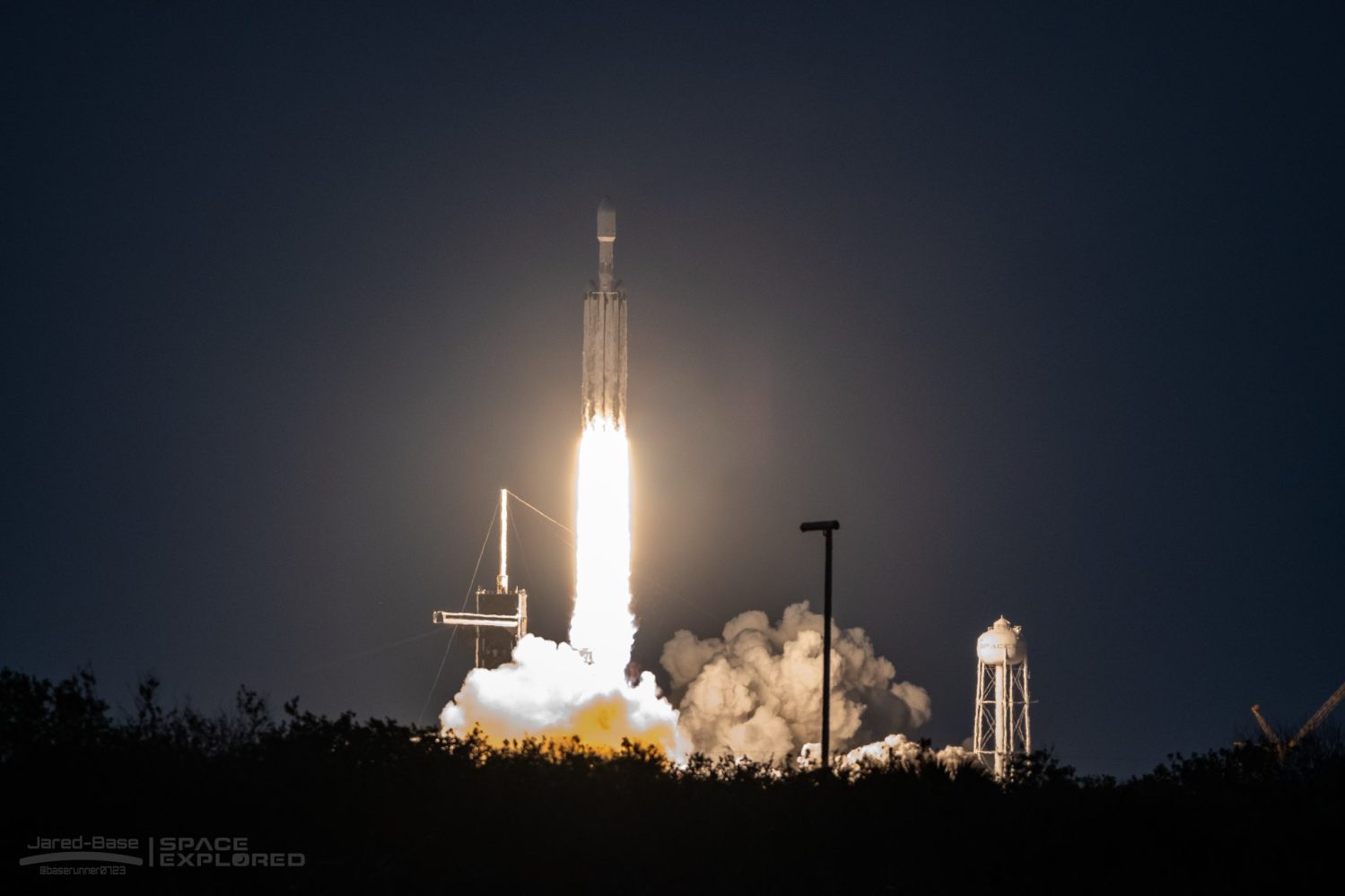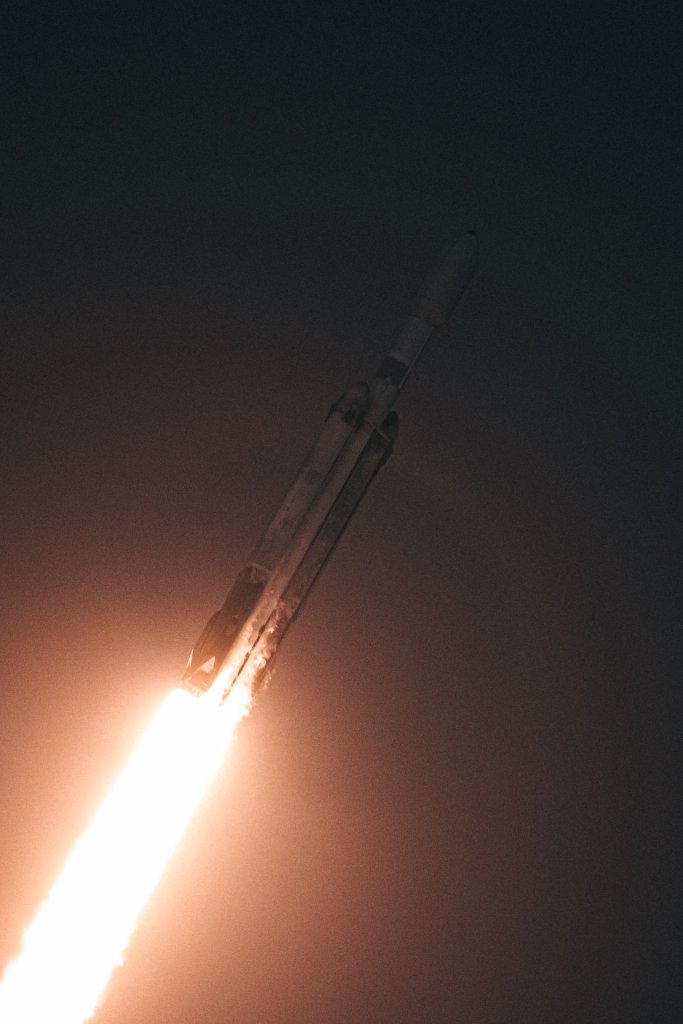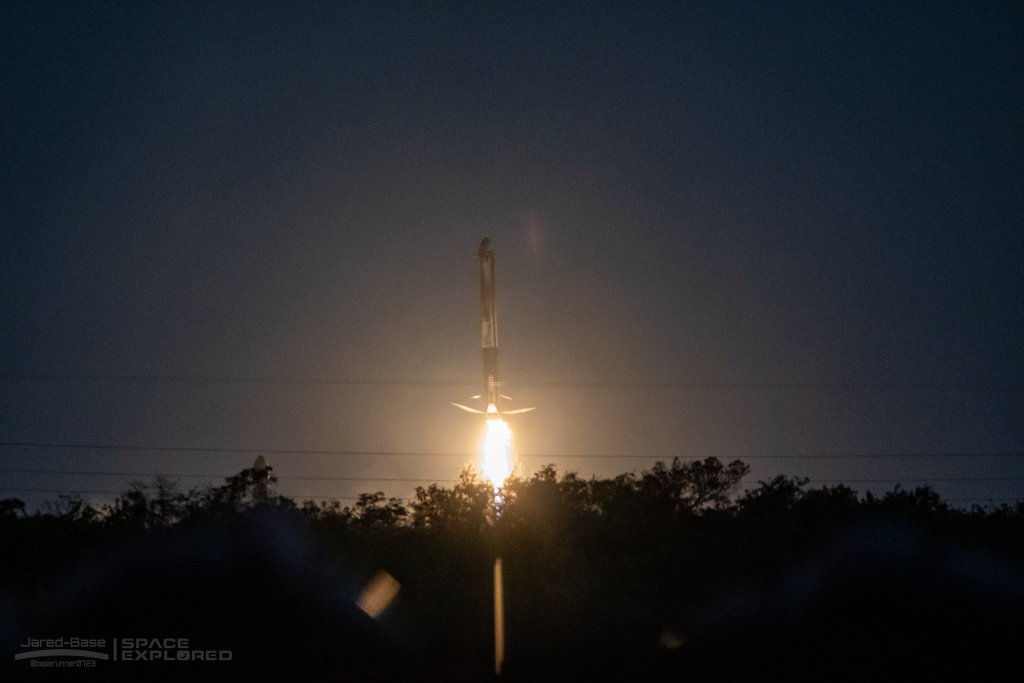
Sunday afternoon, this time without any fog, SpaceX launched USSF-67, another Falcon Heavy rocket out of LC-39A at Kennedy Space Center. Starting a year that could bring us four more super heavy lift launches from the company.
Successful launch of SpaceX USSF-67
Raised vertical Saturday, SpaceX’s second Falcon Heavy since 2019 had a clean countdown Sunday afternoon with beautiful weather. SpaceX’s Falcon Heavy consists of a standard Falcon 9 rocket with two additional Falcon 9 boosters strapped onto the side. This allows the rocket to launch much heavier payloads to orbits around Earth and beyond. After launch, the two side boosters return to LZ-1 and LZ-2 at Cape Canaveral Space Force Station. For USSF-67, the center core was expended, similarly to USSF-44, which launched last November.
The payload for USSF-67 is a group of classified satellites for the Space Force, one of many missions awarded to SpaceX during the National Security Space Launch Phase 2 contract in 2020. In that contract, SpaceX was awarded 40% of the launches, with ULA getting the remaining 60%. Each task order the Space Force issues to SpaceX will cost $316 million, $21 million less than ULA.

While the livestream stopped after the two side boosters’ successful touchdown, we know that the payloads were sent directly into a geostationary orbit. The first payload is believed to be CBAS 2 (Continuous Broadcasting Augmenting SATCOM), a communications satellite designed to expand military comms and transmit military data continuously (pretty hard to guess that by its name, huh?). CBAS 1 was launched in 2018 with the AFSPC 11 mission on an Atlas V rocket.
The second payload for SpaceX’s USSF-67 was the LDPE-3A payload, and just because I love acronyms as much as the government does, I’ll explain what it is. LDPE stands for Long Duration Propulsive ESPA. ESPA stands for EELV Secondary Payload Adaptor. Finally, EELV stands for Evolved Expended Launch Vehicle (the predecessor of the National Security Space Launch program). So to put it shortly, it’s a space tug that can take smaller satellites to separate orbit destinations from the mission’s primary payload. You gotta love the space industry and its acronyms.
Space System Command confirmed the successful flight of the two USSF-67 payloads later Sunday evening per William Harwood of CBS, continuing the 100% success rate of SpaceX’s Falcon Heavy rocket.

One of many Falcon Heavy missions this year
So far, the most Falcon Heavy launches we’ve had in a single year was two back in 2019. This year SpaceX could launch a total of five. Of course, this is nowhere near the company’s Falcon 9 launch rate, but it will more than double the number of Falcon Heavy rockets launched since the first in 2018.
The next Falcon Heavy mission is slated for no earlier than March of this year and will launch ViaSat 3 along with two other secondary payloads. The next three could launch in April, May, and October carrying the USSF-52, Jupiter-3, and Psyche missions respectively.
Don’t forget that we could also be seeing Starship launch orbitally for the first time this year. So if you’re into big rockets, this is the year for you.
FTC: We use income earning auto affiliate links. More.

Comments